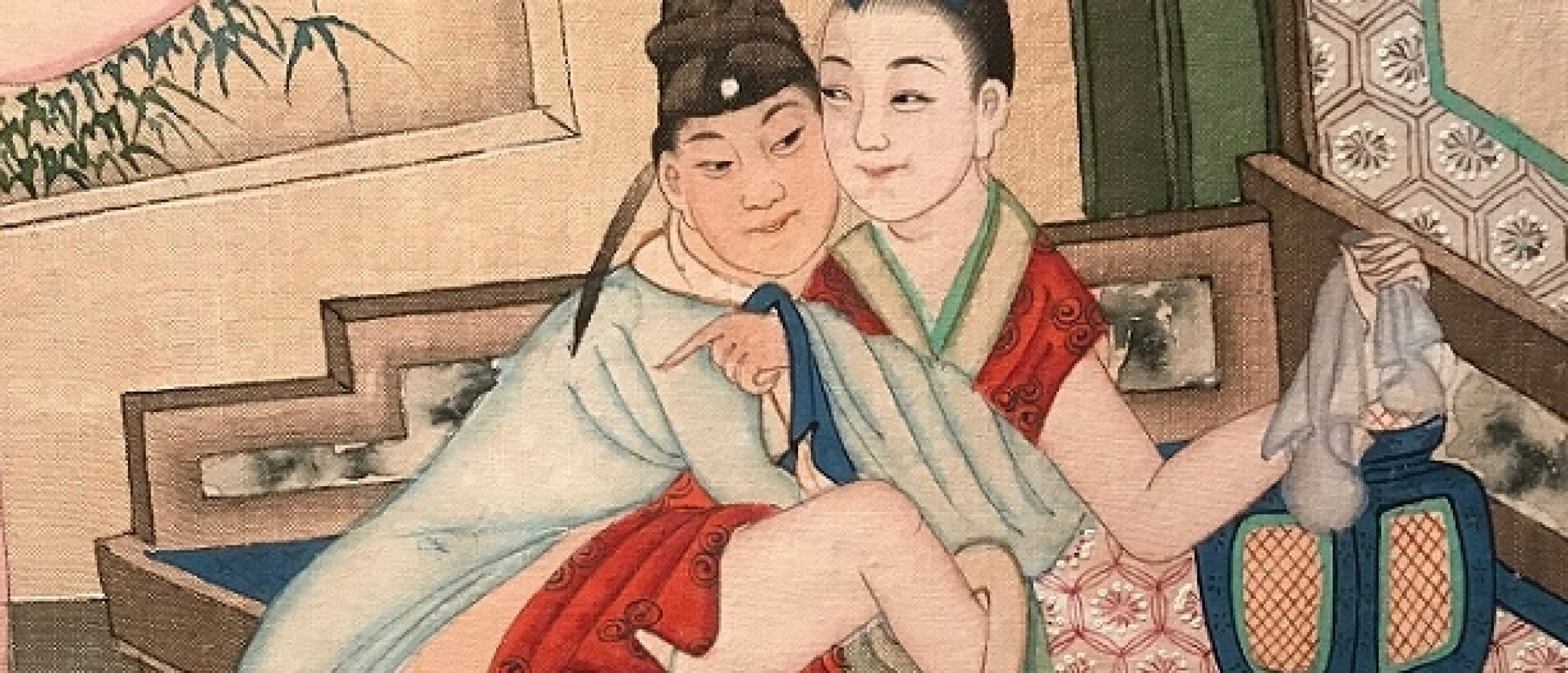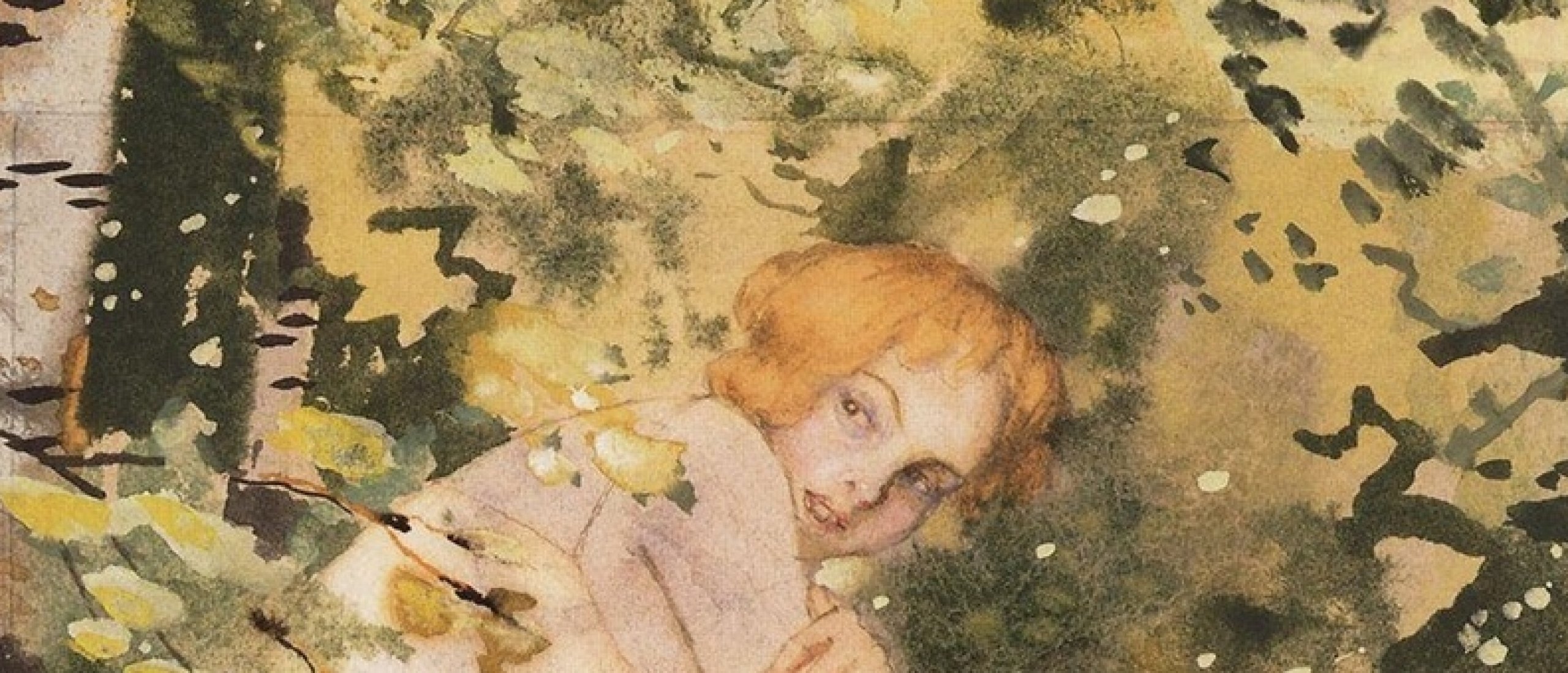
Have you ever wondered where fetish horseplay comes from?

Fig 1. anonymous
We are all familiar with the dominatrix scenario of a sexy and powerful looking woman brandishing a whip while riding a naked man with a bridle in his mouth. It’s not an uncommon theme in contemporary fetish imagery. But when did this particular brand of pleasure play begin? Well…we do not get all our kinky ideas from the Marquis de Sade. Some ideas are much older. Such as the story of Phyllis and Aristotle…yes, the Greek Philosopher.
The Phyllis and Aristotle tale
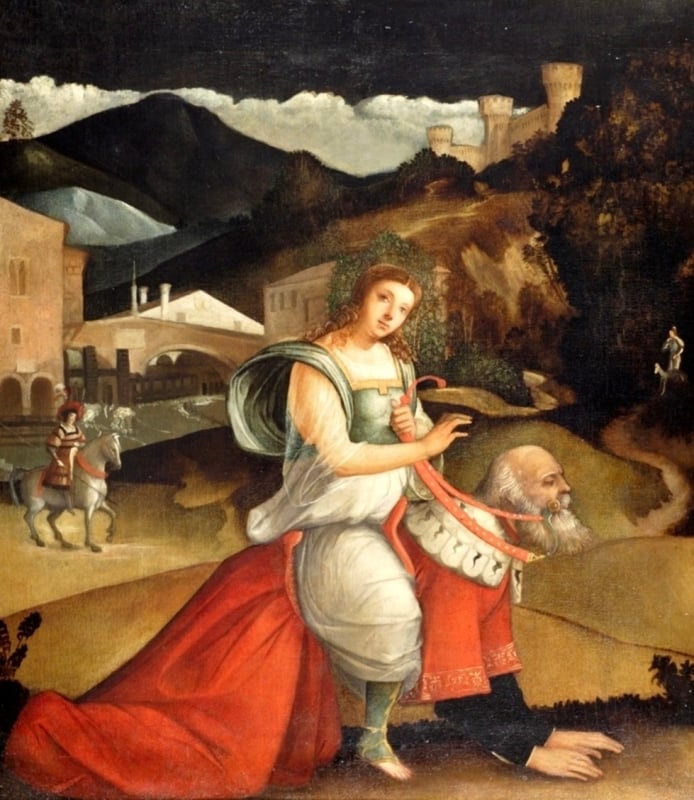
Fig 2 Giovanni Buonconsiglio c. 1500
As one version of the story goes, the famous Greek philosopher Aristotle was coaching the young Alexander the Great to be wary of the powers of female seduction over the intellect (read superiority) of men. Phyllis, who is sometimes portrayed as the wife of Alexander and at other times as his mistress, wanted to prove to him that even Aristotle was not immune to the power of female charms and set out to seduce the philosopher to make her point. It’s a wonderful tale where the scantily clad Phyllis parades in front of Aristotle until the old man can no longer resist and is made to get down on all fours by Phyllis who then rides him with bridle and whip around the royal courtyard to be witnessed by Alexander of course. The story was not new even then. It had sources in history from Mesopotamia to the Middle East and even to India.
The threat to male power in the Middle Ages
The story was resurrected as a morality tale in the middle ages to support Christianity’s battle to suppress matriarchal social structures and any other expressions of female resistance to the power of men, especially in the church. It warned men against falling prey to the idea women might have but it was also a story designed to maintain political power in the hands of men both in secular and ecclesiastical circles. It was a clear message of authority where matriarchal power still held sway in certain societies. As the catholic church, and the various protestant denominations that followed later, vied for control over the minds of men, the story of Aristotle falling to the wiles of a woman became a popular theme, produced by artists all over Europe beginning especially in the 14th and 15th century but representations of the tale can be found as early as the 1200’s
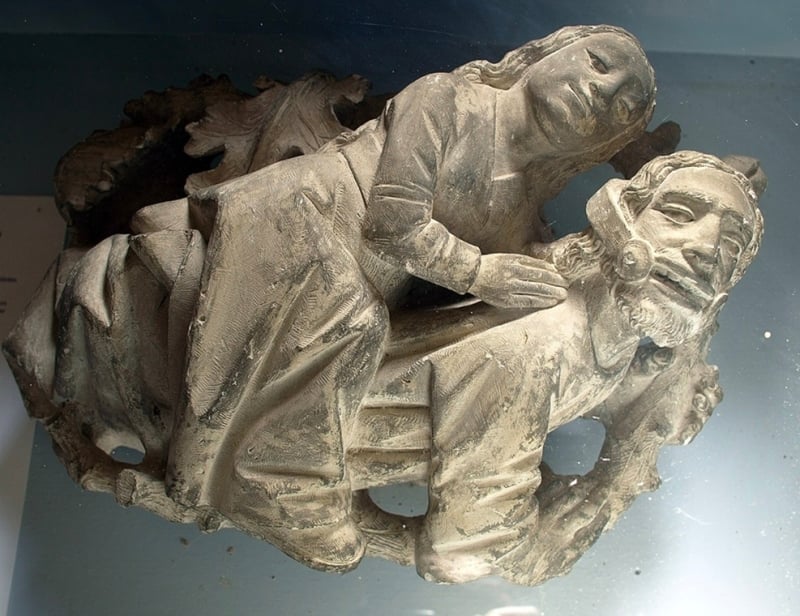
Fig 3 Cadouen Abbey 12th century
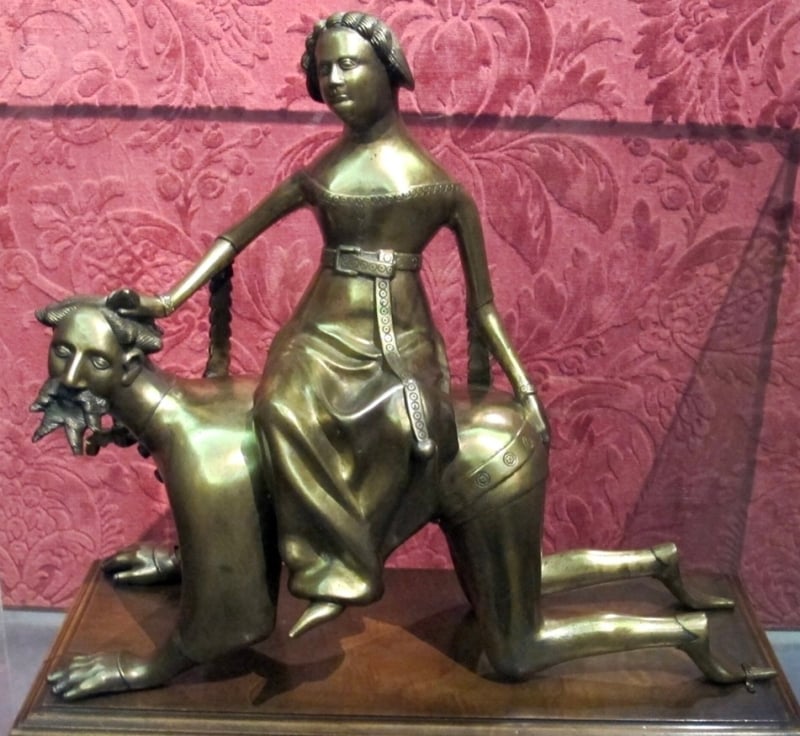
Fig 4 Aquamanile, Massland, 1400
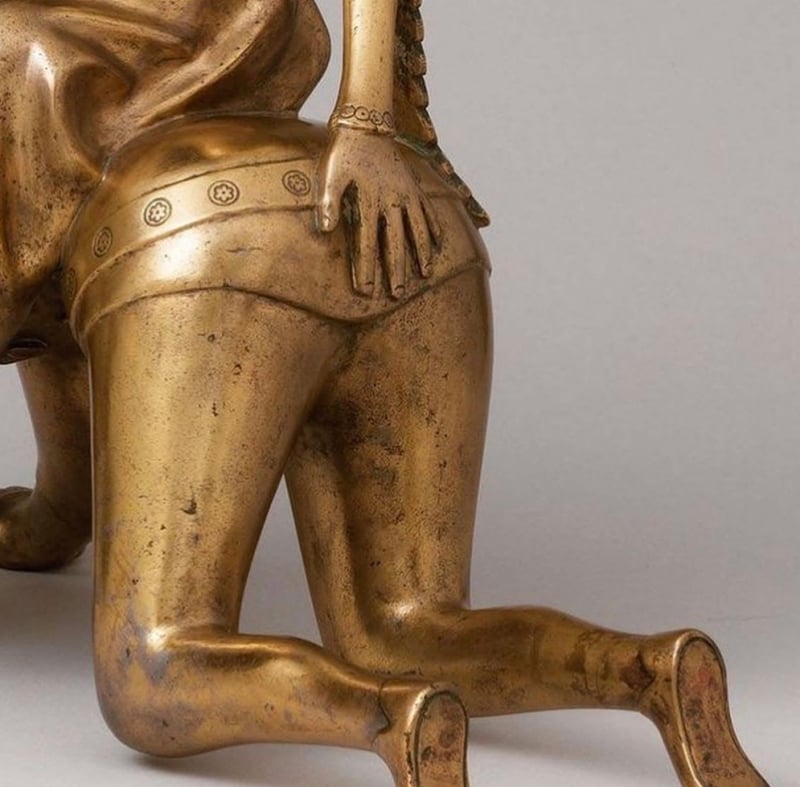
Fig 5. Aquamanile, detail
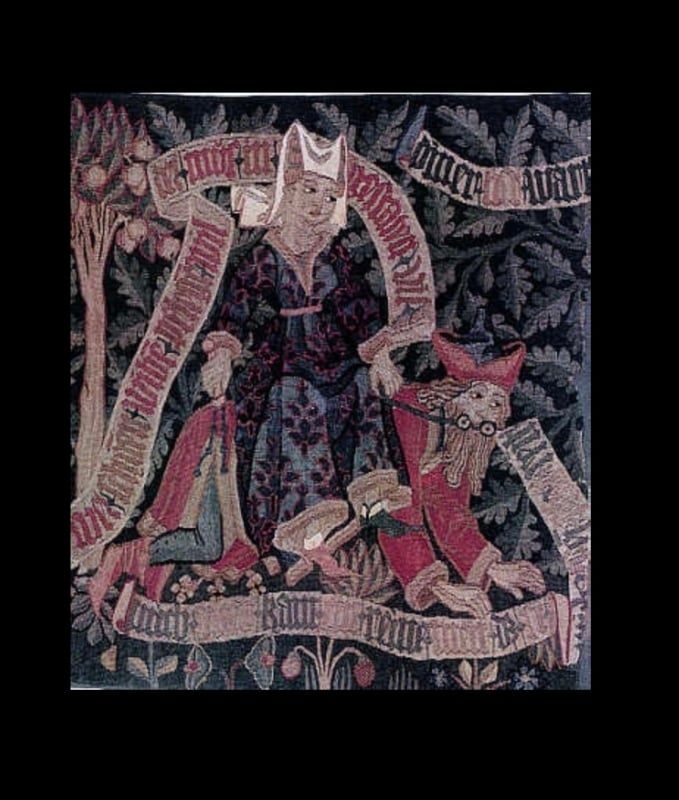
Fig 6 Tapestry, Basel, c.1470
Martin Luther’s Protestantism in Germany
The image gained even more popularity in the 16th century especially as Lutherism locked horns with Catholicism for control of religion, faith, but especially sexual behavior. With the Augsburg Confession, the document that outlined the Lutheran rules regarding religious practice the Phyllis story enjoyed new popularity. Lutheran faith now permitted their clergy to enter marriage. Sex for procreation was seen as a natural outlet for human sexual desire. But sex outside marital bounds was still seen as forbidden and the lesson of Phyllis and Aristotle was incorporated into Lutheran teachings. Some of the earliest protestant iterations of the Phyllis and Aristotle story originated in Augsburg, the center of early Lutherism. Later, with the arrival of the printing press the image of Phyllis riding Aristotle became even more popular and artists all over Europe began producing prints and paintings on the theme.
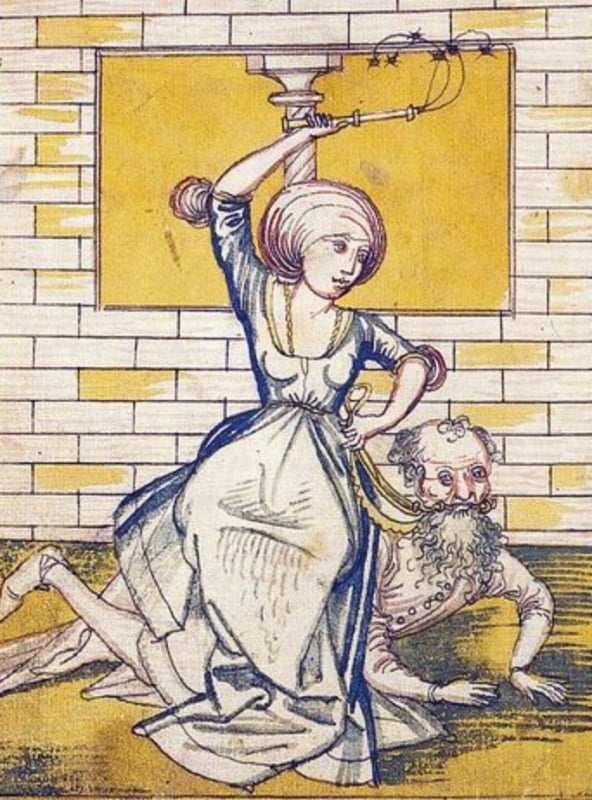
Fig 7 Phyllis and Aristotle, Augsburg, 15th century
In Premium more on how a morality lesson backfires and becomes a guidebook for pleasure, the enduring popularity of the Phyllis Aristotle tale, and MUCH more...!!
Click HERE for an article on the blasphemy in art
Let us know your thoughts on the article in the comment box below..!!



